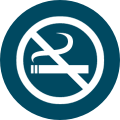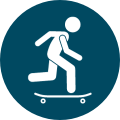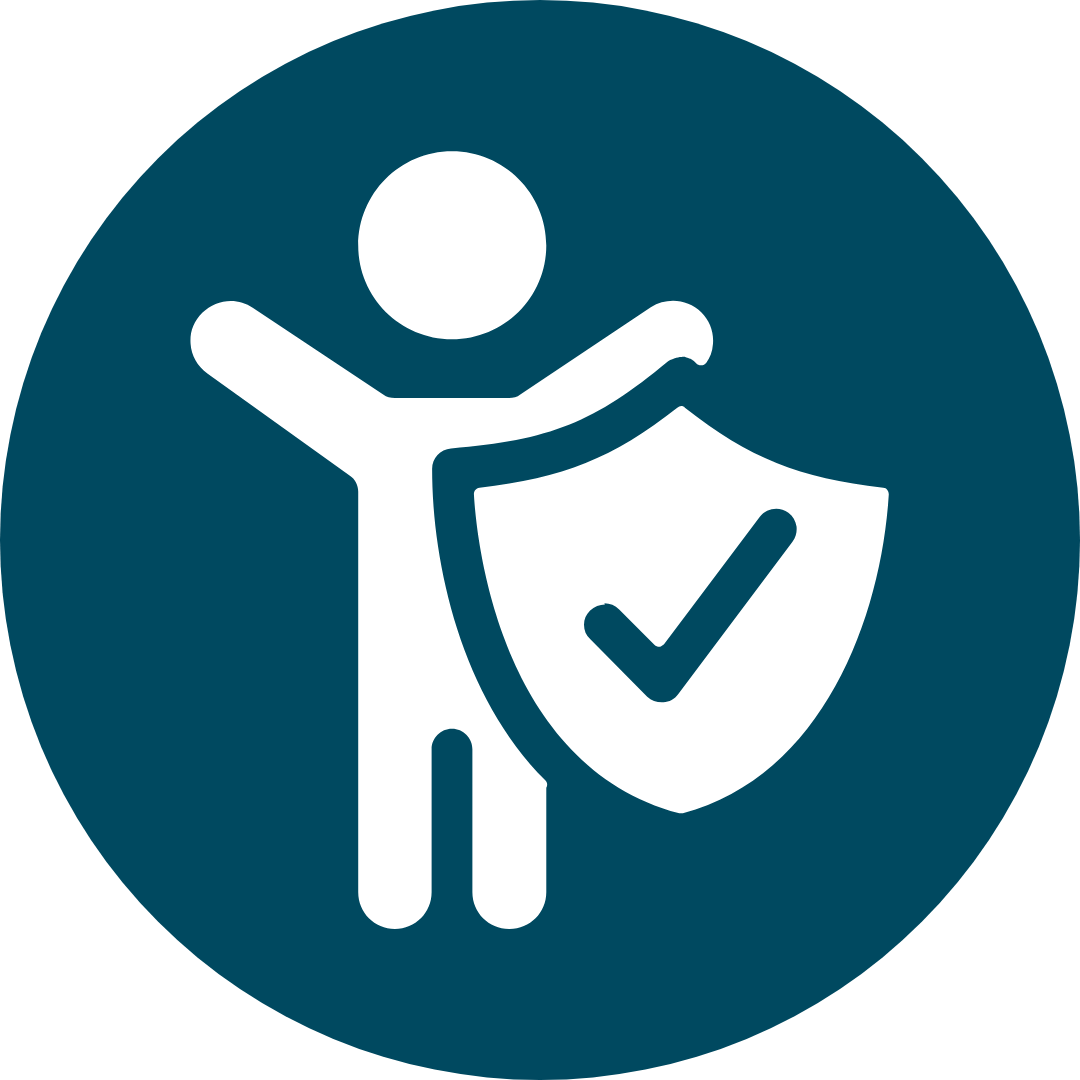
Our vision:
A safe and healthy Kitsap County for all.
Living Tobacco Free
Ready to quit tobacco (nicotine)? We have resources to help!
Quitting smoking or vaping can be hard, but you are not alone, and free help is available.
Below you will find links to services that can help you on your path to a tobacco-free life and learn about the many benefits of quitting tobacco. Your healthcare provider can also provide help quitting tobacco.

Please note: This page refers to commercial tobacco. Kitsap Public Health District acknowledges the importance of traditional tobacco in ceremony, healing and spiritual offerings among various Indigenous and Native American communities. Traditional tobacco is different from commercial tobacco, which is mass produced and sold by the commercial tobacco industry and is linked to addiction and disease.
How quitting helps your health
Smoking is the leading cause of preventable disease, disability, and death in the United States. Smoking can cause cancer, heart disease, stroke, lung diseases, diabetes, and chronic obstructive pulmonary disease (COPD).
When you quit smoking, your body begins healing within minutes. Quitting tobacco will help you feel healthier and reduce your risk for diseases.
Quitting resources & tips
The Affordable Care Act (ACA) requires health insurance providers plans to offer the following resources for free, for up to two quit attempts per year:
Four nicotine-quitting counseling sessions by phone.
90 days of FDA-approved prescription medication for nicotine replacement.
Combining counseling with cessation medication (e.g. nicotine gum, patch, lozenge etc.) increases your chances quitting for good. Discuss with your primary care provider to get your tobacco free journey started!
Free quitting resources
Washington State Quitline provides Washingtonians with confidential, one-on-one counseling from a Quit Coach. Some residents are eligible for free medication to help them quit smoking, vaping, or other tobacco.
Call 1-800-QUIT-NOW (1-800-784-8669)
Visit quitline.com
Text READY to 200-400.
Spanish speakers can call: 1-855-DÉJELO-YA (1-855-335-3569)
People with hearing impairments: 1-877-777-6534
Veterans: 1-855-QUIT-VET (1-855-784-8838)
2Morrow Health smartphone app
Asian Smokers’ Quitline is a free nationwide quitline open Monday through Friday, from 7:00am to 9:00pm. This quitline has three different phone numbers:
Cantonese & Mandarin 1.800.838.8917
Korean 1.800.556.5564
Vietnamese 1.800.778.8440
Veteran’s Quitline 1.855.784.8838
2Morrow Health is a free, anonymous, self-guided program that teaches you how to deal with unhelpful thoughts, urges, and cravings caused by nicotine.
Youth resources
This is Quitting is a text-to-quit vaping service for people in Washington ages 13-24. Text DITCHVAPE to 88709.
Live Vape Free is a youth texting program for teens ages 13 to 17 that is fun, easy-to-navigate, and teaches the skills to quit vaping for good. Text VAPEFREE to 873373.
Teen Link is a free, confidential help line for teens by teens. Call, text, or chat 1-866-833-6546 evenings from 6-10 p.m.
The Choose You program helps support youth that are trying to quit.
For educators & mentors
CATCH My Breath: A four-session comprehensive evidence-based education program about vaping for students in grades 5 – 12.
Tobacco Prevention Toolkit: A collection of curriculums, lessons, programs and resources aimed to prevent youth smoking and vaping for students in grades K-12.
More quitting tips
From SmokeFree.gov and the American Cancer Society.
Consider asking:
Your healthcare provider about nicotine replacement therapy, medicines or going "cold turkey."
Your health insurance provider about their cost-free quit programs and aids.
Prepare for your quit day:
Pick a date
Tell friends and family about your quit day
Remove all vape products from your home, car and work
Stock up on substitutes like gum, hard candy, toothpicks or straws
Talk to your doctor and get help finding the best plan for you
Set up a support system
Think about past attempts to quit. What worked and what didn’t?
Practice saying "no" when offered
Helpful fact sheets
Nicotine products
Tobacco
Tobacco is a plant that is grown, dried out then shredded ready to be refined into different products. Tobacco can be made into cigarettes, cigars, cigarillos, chew, snuff and a variety of products that can be smoked, snorted or dissolved orally. All tobacco products contain the addictive chemical, nicotine.
Tobacco contains the addictive chemical nicotine.
There is no ‘safe’ form of tobacco.
Tobacco smoke can contain over 5,000 different chemicals. 70 of them cause cancer.
Smoking can cause lung damage, heart disease, stroke, infertility and 15 types of cancer.
Smokers are at higher risk of anxiety and developing depression over time.
Nicotine
Nicotine is an addictive chemical that can be sourced from the tobacco plant or synthesized in a lab.
Nicotine is addictive.
Nicotine does not cause cancer, the other chemicals in smoke and vapor aerosols do.
Nicotine is present in all tobacco and synthetic products like:
Cigarettes
Cigars
E-cigarettes/Vapes
Hookahs
Chewing Tobacco
Pouches (aka Zyns)
Nicotine negatively impacts brain development for users under the age of 25 and result in poorer mental health.
Vaping
Podcast: Supporting Youth Against Vaping & Substance Use
E-cigarettes (vapes) deliver a high dose of nicotine. Over time, users develop an addiction that is harder to beat.
Vapes contain chemicals like lead, arsenic, aluminum, nickel, and formaldehyde among others. Often, these chemicals cause scarring to lung tissue making it harder to breath and can cause serious health problems, like cancer.
Vaping has given rise to a new injury called EVALI (E-Cigarette, or, Vaping Product Use-Associated Lung Injury). This is a life-threatening injury caused by inflammation and scarring of lung tissue.
Vapes do not emit water vapor, it produces a chemical aerosol contained in the e-juice.
Vapes can contain up to 30x more nicotine than 1 pack of cigarettes, nicotine makes vapes and tobacco addictive.
In the 2024:
Over 2.25 million youth reported current use of tobacco.
1.5 million of those youth reported using e-cigarettes.
One in four of those youth use e-cigarettes daily.
Four in five of those youth use e-cigarettes that contain flavors.
Young adults who vape nicotine are six times more likely to start using cigarettes than those who do not vape at all.
“Non-nicotine” vapes are equally as harmful as regular vapes due to the unknown chemicals present.
Vapes are not an FDA approved smoking cessation aid
Smokeless Tobacco/Nicotine Pouches
Smokeless tobacco also known as oral products come in different forms and are sorted into two categories, “smokeless tobacco” and “nicotine pouches”. These products are placed in the mouth and nicotine is absorbed through the gums. Recreational oral products do not include, nicotine gums and lozenges as these are FDA approved smoking cessation aids.
Smokeless Tobacco
Produced to be consumed by chewing, dissolving or in some cases snorted.
Known to cause cancer in the mouth, throat and pancreas.
Nicotine Pouches
Recently introduced to the market in 2016, short- and long-term health effects are still being learned.
Has slowly taken over the oral product market where the most common product is “Zyn”
Pouches are preferred over smokeless tobacco due to ease of use, concealability, lowered harshness and flavors.
Recreational oral products are not an FDA approved smoking cessation aid.
Laws & resources for retailers
Washington State RCW 70.160 prohibits smoking in public places and workplaces. It requires smoking be a minimum distance of 25 feet from entrances, exits, windows and air intakes to prevent smoke from entering buildings.
Learn more on our Smoking (and Vaping) in Public Places page.
Tell us if you see someone smoking or vaping in a public place or place of employment.
Laws about selling tobacco and vapor products
Tobacco Access for Minors RCW 70.155
Vapor Products RCW 70.345
Report a violation to the Liquor and Cannabis Board if you witness a sale of tobacco or vaping products to customers under the age of 21.
Education resource
Retail clerk education program developed by Public Health Seattle-King County
This course is tailored to tobacco and vapor product retailers to help them understand their responsibility when selling these products to the public.
Our role
We work to reduce the burden tobacco places on our community by:
Helping you quit;
Preventing youth from starting;
Reducing your exposure to second-hand smoke.
To learn more about our community's needs, read the Youth Cannabis & Commercial Tobacco Prevention Program (YCCTPP) 2024-2025 Needs Assessment here.
To learn more, email cdp@kitsappublichealth.org.
Healthcare Provider Resources
Looking for more healthcare guidance or resources? Visit our Provider Resources page.
















.png)
